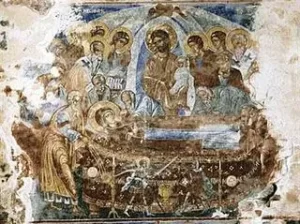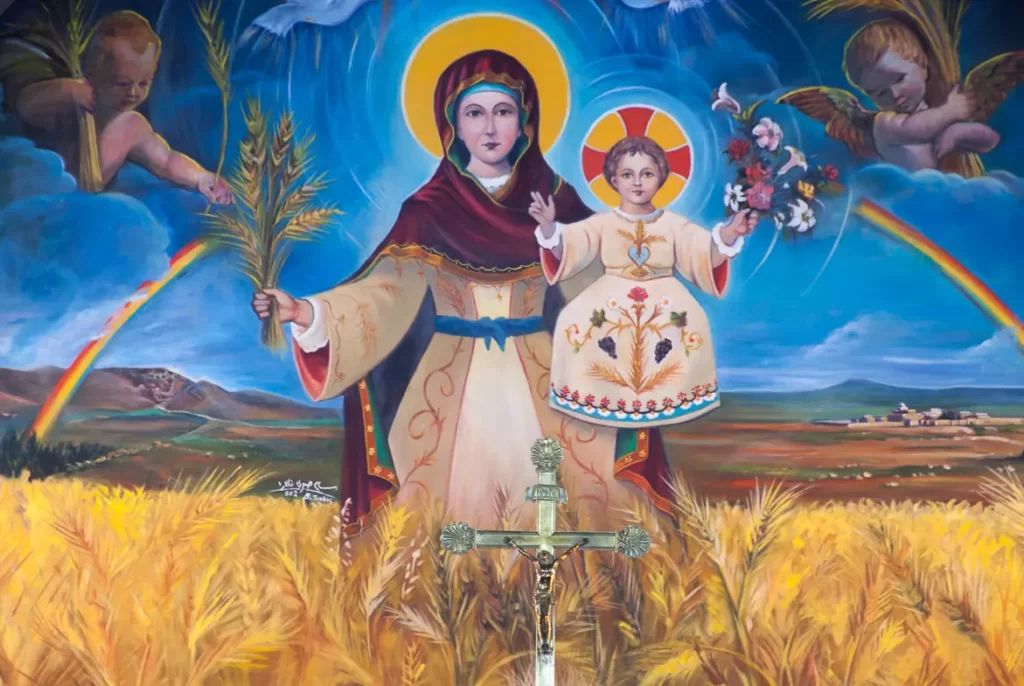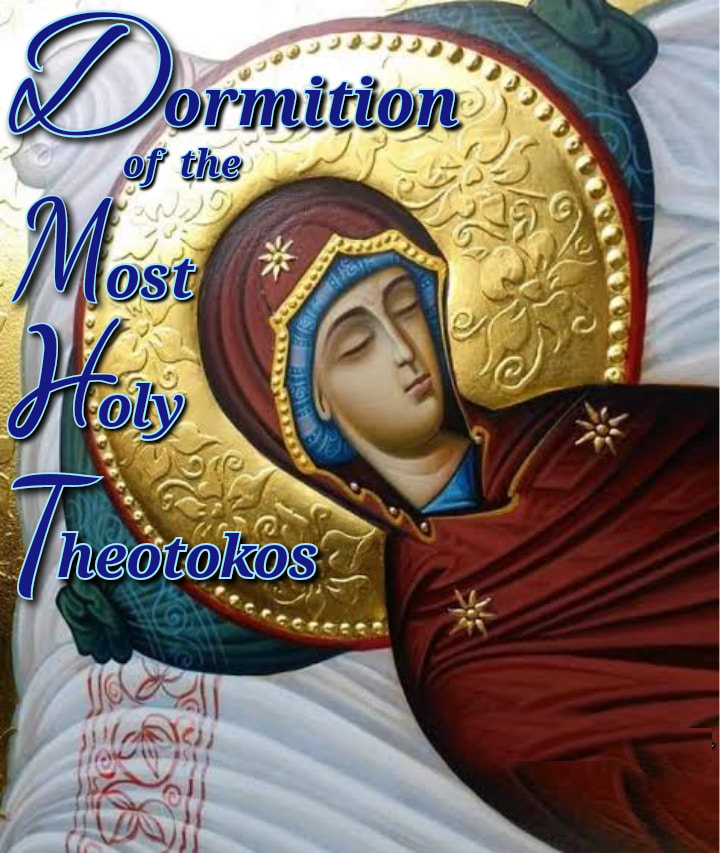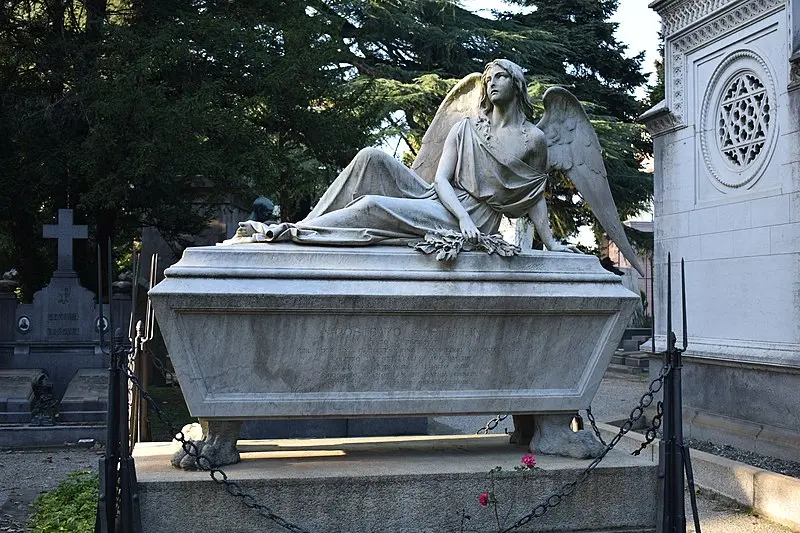 Catholics celebrate the Assumption of the Virgin Mary into Heaven on this day (15 August) while the Orthodox celebrate what is called Her “Dormition,” since the Orthodox Church does not teach that Her body ascended into the heavens. This day is also known as Our Lady’s Herb Day.
Catholics celebrate the Assumption of the Virgin Mary into Heaven on this day (15 August) while the Orthodox celebrate what is called Her “Dormition,” since the Orthodox Church does not teach that Her body ascended into the heavens. This day is also known as Our Lady’s Herb Day.
August 15th is an annual bank holiday not only in Greece but in most Catholic and Orthodox Christian countries around the world.
Catholics celebrate the Assumption of the Virgin Mary into Heaven on this day while the Orthodox celebrate what is called Her “Dormition,” since the Orthodox Church does not teach that Her body ascended into the heavens.
Scripture does not give an account of Mary’s Assumption into heaven. Nevertheless, Revelation 12 speaks of a woman who is caught up in the battle between good and evil. Many see this woman as God’s people. Since Mary best embodies the people of both Old and New Testaments, her Assumption can be seen as an exemplification of the woman’s victory.
In both cases, however, the Virgin Mary, the Mother of Jesus, is the figure that is at the center of celebrations in August across the Christian world.
In many parts of Europe today, it is still observed as a public holiday known as Assumption Day. This festival was traditionally celebrated long before it was adopted by the Catholic Church. In Italy, Ticino, and San Marino, it is to this day an important public holiday known as Ferragosto. Named after the Latin Feriae Augusti (the festivals of the Emperor Augustus), Ferragosto was introduced in 18 BC to celebrate a battle victory and the early harvest of the late summer season. In these modern times, it is customary for celebrants to close their homes and shops and go on holiday at this time of year.

Our Lady’s Herb Day
The Feast of the Assumption has also been observed as Our Lady’s Herb Day (or the Festival of Our Lady of the Harvest), which celebrates the gathering and consecration of herbs, vineyards, grains, flowers, and fruits. This custom stems from the medieval tradition that placed Mother Mary as the overseer of all plant life. In Marian liturgies, Mary herself is often compared to flowers like lilies and roses known for their purity and beauty. Additionally, all the waters of the world are said to be blessed and transformed by Mother Mary into healing waters on the feast of her Assumption.
Maronites along with many other Eastern Catholics and Orthodox honour Mary as Our Lady of the Harvest which in its pre-Christian origins arose from the needs of the farmers to seek help from the deities for a fruitful harvest. Ancient Christian texts began to attribute to Mary protection not only in material terms of the crops of the field but also her role as the Mother of Christ.

Our Lady’s Herb Day is the perfect day to enjoy the bounty of our harvests, and also to contemplate and connect with Mother Mary, who is the epitome of pure-hearted shakti, radiant love, and compassionate action; the advocate and protector of plants and trees, children, animals, and the infirm, who offers a most profound form of supreme comfort to all of her children.
The Name Mary
“Mary” itself is not the original name by which the Mother of Jesus was known. Actually, this is a later, Latinized version of the older name “Maria.”
This name was first recorded as such in the New Testament of the Christian Bible. Since Greek was the original language in which the New Testament was written, Maria (Μαρία) or Mariam (Μαριάμ) were the forms which were commonly used across the Christian world in the first few centuries after Christ before its Latin variation became well-known.
According to experts, its origins are believed to stem from the Aramaic name ”Maryam,” which was a derivation of the Hebrew name ”Miriam.”
There is no clear evidence of what the name Miriam actually meant in Hebrew, but the most popular belief is that it was a term meaning “sea of bitterness” or “sea of sorrow.” This could actually be quite appropriate considering what Christians believed -and still believe- about the Virgin Mary’s deep sorrow in having witnessed the crucifixion of her son, Jesus.
The name Maria began growing in popularity in the Greek world very quickly after the first Greeks embraced Christianity almost 2,000 years ago

108 Names of the Divine Mother (English)
Om… I bow to SHE who is the Mother of the Universe.
Each of the Divine Names (in English) ends with ~ swaha.
When you use the Sanskrit word swaha you are invoking the God / Goddess, you are arousing the God / Goddess to come and witness your action, to come and receive your prayer.
We append these 108 Names of the Divine Mother and pray that you will be understanding the significance of the prayers, along with the efficacy of same.
Download the 108 Names of the Divine Mother

Image Credit: Wikimedia Commons / Nekresi monastery, Kakheti, Georgia, Pixabay / Ralph Kunze, Mesopotamia heritage / Pascal Maguesyan, Wikimedia Commons / Seauton
![]()

